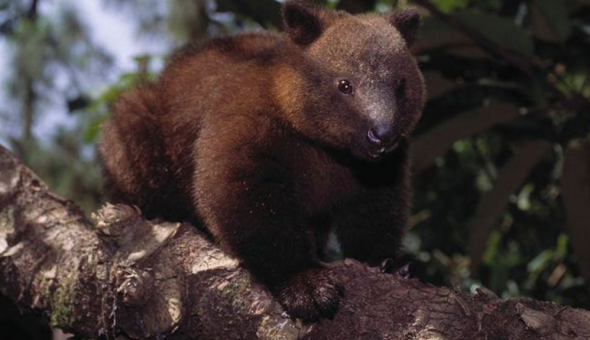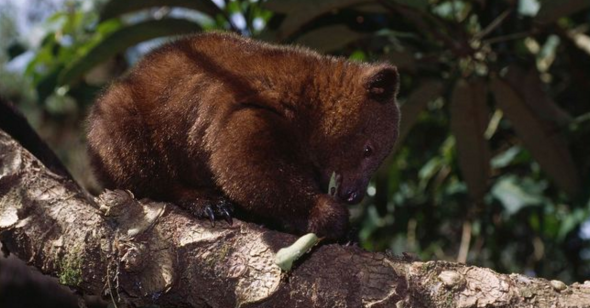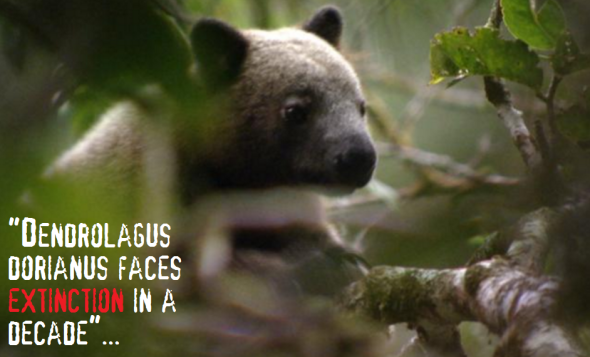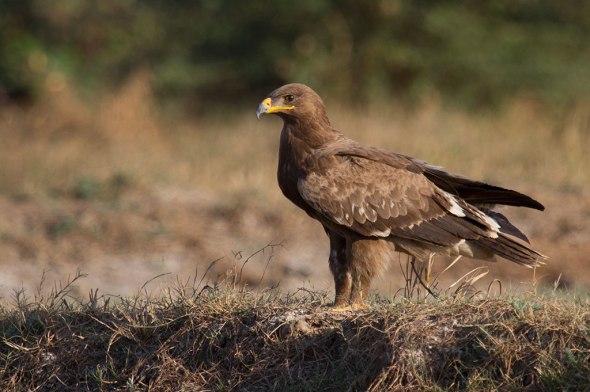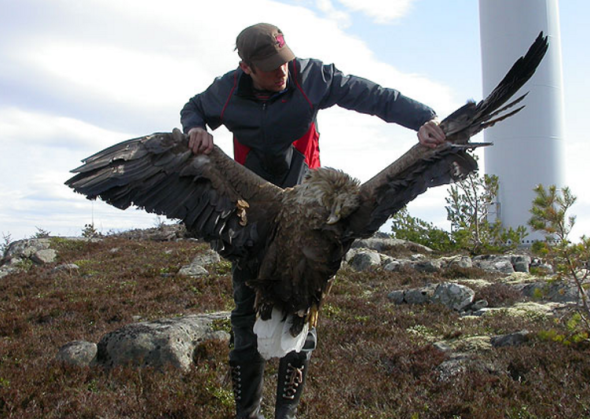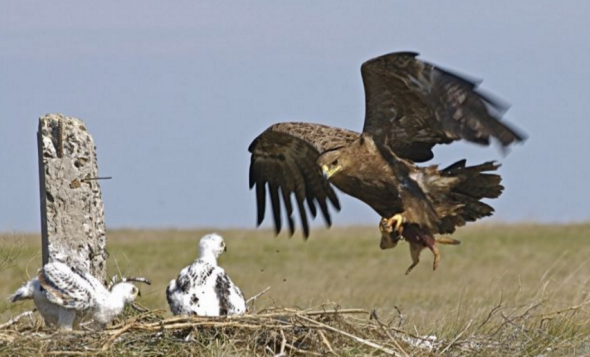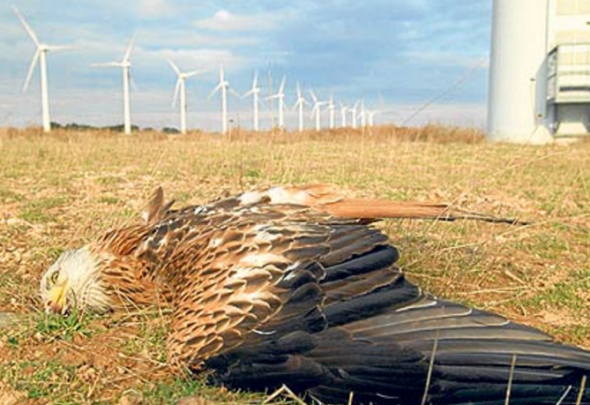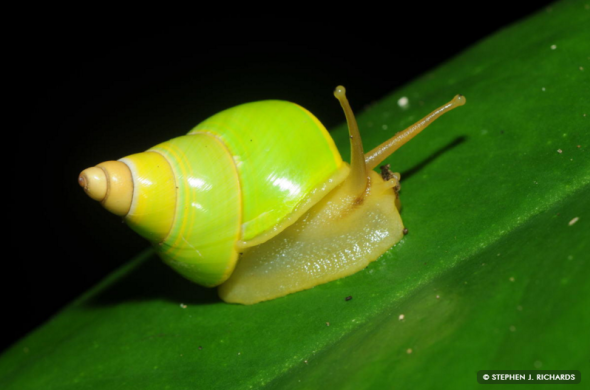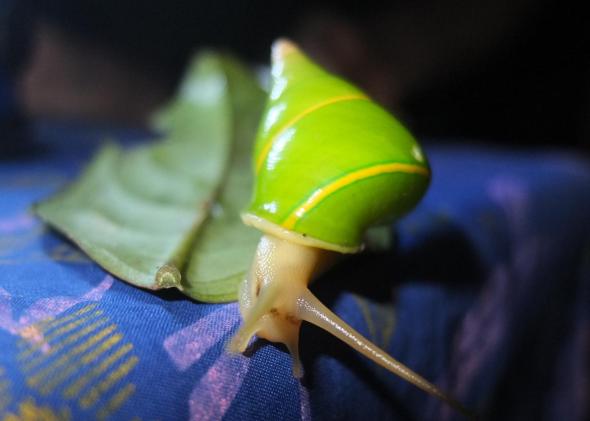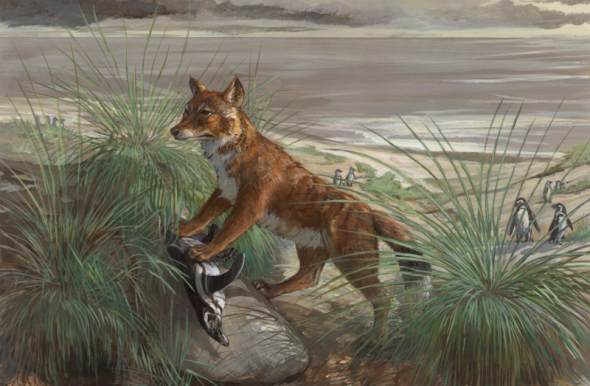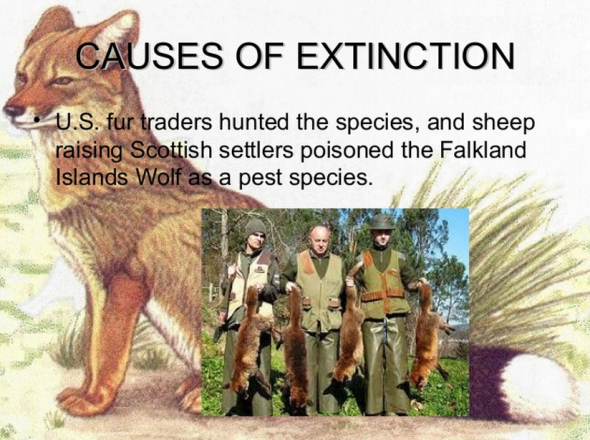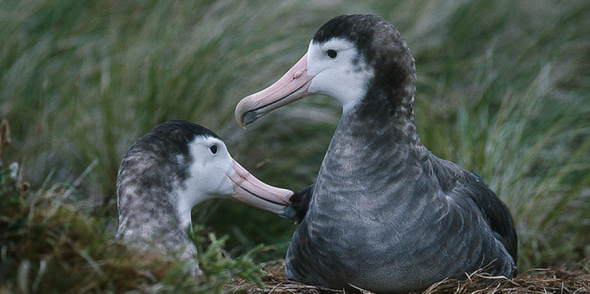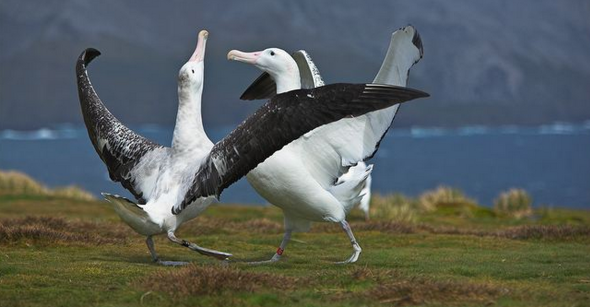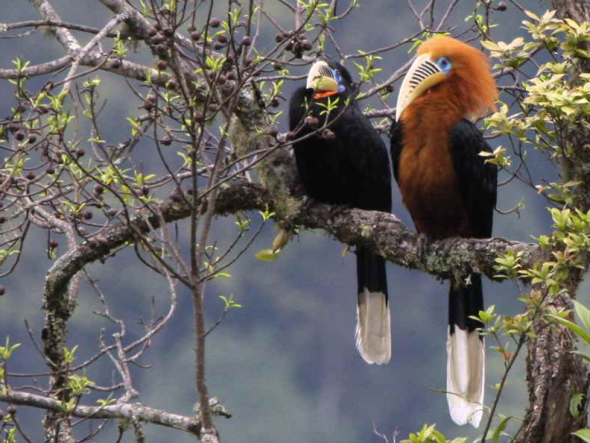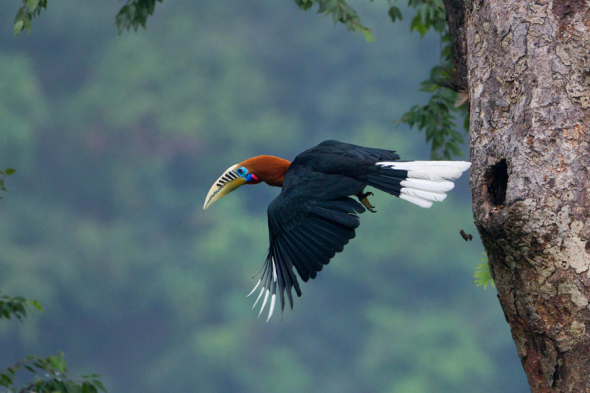Endangered Species Friday: Macrotis lagotis | Bandicoot.
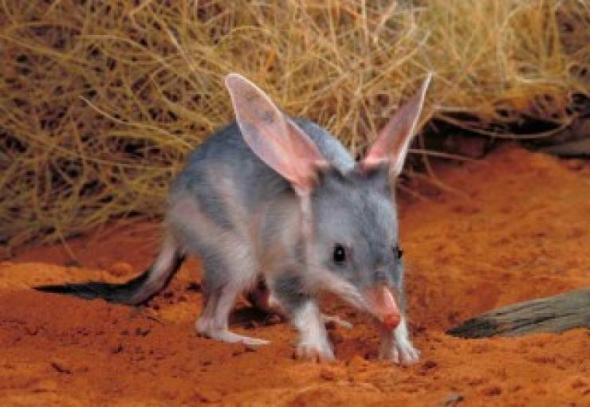
Endangered Species Friday | Macrotis lagotis
This Fridays (ESP) [Endangered Species Post] I touch up on the Macrotis lagotis, commonly known as the Rabbit-eared Bandicoot identified back in 1837 By Dr Reid. (Image credit unknown, explorer unknown).
The Rabbit Eared Bandicoot is the fifth Australian marsupial that I’ve documented on since establishing the (Endangered Species watch Post), covering now over 403 species of animals (worldwide) in exactly 5 years. From 1965 very little was actually known about the Rabbit Eared Bandicoot, despite the fact it was formally identified way back in the 1800’s.
Unfortunately when scientists eventually managed to re-locate the species, they found the animal was in fact nearing extinction within its endemic wild. Listed then as (ENDANGERED) the species almost went extinct from the 1980’s - 1900’s. Fortunately environmental scientists worked hard to preserve this rather unusual animal. From 1990 the species was still listed as (endangered - and nearing complete extinction within the Australian wild).
Fortunately from 1994-1996 species recovery programs increased populations within the wild. Come 1996 the species was re-listed as (vulnerable). Commonly known as the ‘bilby’, M. lagotis once inhabited some 70% of Australia. Wild populations are now restricted predominantly to the Tanami Desert (Northern Territory), the Gibson and the Great Sandy Deserts (Western Australia), and one outlying population between Boulia and Birdsville (south-west Queensland). The bilby has gone extinct from portions of southern Queensland within the last few decades.
However despite numerous conservation actions that have been aiding and increasing bilby populations, they are now on the decrease; slowly, but surely, for how long though is another story. Endemic to Australia (Northern Territory, Queensland, and Western Australia) its believed there are no fewer than 500 individuals on Thistle Island, 500 in Arid Recovery, 100 in Venus Bay, 200 in Peron, 40 in Scotia, 200-500 in Queensland.
There are fewer than 1,000 individuals in the Northern Territory and 5,000-10,000 in non-reintroduced Western Australia. The global population might be under 10,000 individuals. The species is wide-ranging and patchily distributed. The population estimates of bilbies in the Northern Territory and Western Australia are very approximate, as there are no published numbers in peer-reviewed journals. It is known from aerial surveys that bilby signs (diggings) in the areas where bilbies are persistent occur less than 15 to 20 km apart.
“TEN THOUSAND INDIVIDUALS REMAINING”
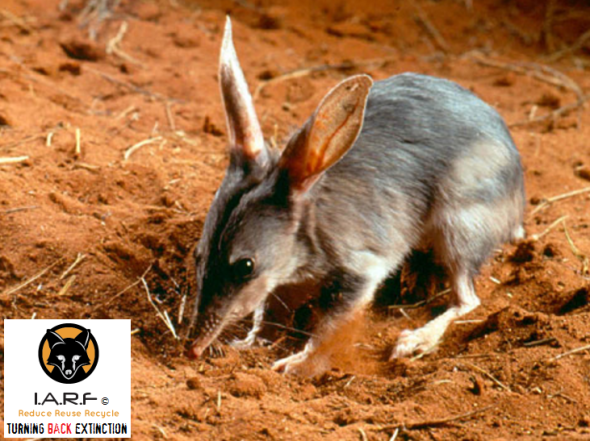
Image: Bilby, Australia. Photographer unknown.
Bilby populations are not known to be seriously fragmented, and from what I am aware the species is protected under CITES APPENDIX I (Convention on International Trade in Endangered Species of wild Fauna and Flora).
“WHAT’S WITH THE LARGE EARS?”
You’ll find that many small and even large animals that live within extremely arid and hot countries, and are active during the daytime will host large fan like ears. Without these large cooling like rabbit ears many species of animals wouldn’t be able to radiate heat away from its most important organs - being the brain. Smaller ears would most certainly result in the mammal dying from massive heat stroke, and dehydration. However due to the lack of research on the bilby, we still don’t know for sure if these massive ears do indeed help keep the species cool.
Bilby ears are almost naked, which ‘may be for temperature regulation’, but because the research hasn’t been done we don’t actually know for sure. One thing that scientists studying bilbies do agree on is the variability in behavior between bilby populations living in different conditions around Australia. They’ve adopted different diets, burrows, breeding habits and social networks, and this adaptability has been the key to their survival.
THREATS
The current bilby distribution is associated with a low abundance or absence of foxes, rabbits, and livestock. Major threats relate to predation from foxes, habitat destruction from introduced herbivores, and changed fire regimes. Predation pressures “from feral cats” and dingoes occurring in association with pastoral practices may be a threat to the bilby. Feral cats have affected the success of reintroduced populations. Additional threats to the bilby include mining and other development, and road mortality.
BILBY FACTS
When: Bilbies are opportunistic breeders waiting until conditions are good, rather than particular seasons.
Where: In the wild, bilbies are now limited to patches of the northern desert areas of NT and WA. and a tiny isolated remnant population in SW QLD. They are also found in sanctuaries and breeding colonies in WA, NSW, SA and QLD.
Other info: The name bilby comes from the Yuwaalaraay people of northern NSW. They are important in Aboriginal culture and were a common food resource. Bilbies live up to 7 years in the wild and 11 years in captivity. They are considered endangered.
WHAT DO BILBIES EAT?
Bilbies are omnivores and eat insects, seeds, bulbs, fruit and fungi. Most food is found by digging in the soil. Big ears quickly detect insect prey, which they catch with their long tongue.
Thank you for reading.
Every Monday and Friday I.A.R.F publishes in the last (6 months of each year) an Endangered Species Post. Furthermore every Wednesday I.A.R.F also publishes investigative articles relating to wildlife, environmental and animal concerns. For more information please subscribe to our news feed for free here www.speakupforthevoiceless.org
Dr Jose C. Depre PhD. MEnvSc. BSc(Hons) Botany, PhD(NeuroSci) D.V.M. Environmental & Human Science.
VEGAN FRIDAY | COSTA RICAN STUFFED TORTILLA
VEGAN COSTA RICAN STUFFED TORTILLA
Staying on track with our month long South American vegan and vegetarian Monday’s and Friday’s, we bring to you a beautiful Costa Rican Stuffed Vegan Tortilla. Every week we host a vegan Monday and Friday day for anyone to try. While we understand that most vegans believe (everyday should be a vegan day), its really not that simple. Many people may not want to go vegan, and those that are trying their hardest may not want to go all the way.
However if we can lose them two days; I.e Monday and Friday where no meat or dairy is consumed, then we believe we’re onto a winning track, and you never know, encouragement, education and awareness may eventually lead a consumer to adopt more days. We can only try, and one thing we’ll not practice, or even encourage is pushing our beliefs or diets (or others) down other peoples throats.
That’s just wrong, furthermore market research has shown that when companies consistently push their foods or beliefs onto others obsessively. The consumer, or general Joe in the short run continues their own way of doing things, meanwhile ignoring the big brands, markets or pushy salesperson.
Invite the friends, and family around this Friday, spread the word, and lets make Friday a no meat and dairy day for all, one day, that’s all it is. Monday makes two days. There you go, you are on the road to at least trying, and we for one welcome that and take our hats off to you for at least trying
INGREDIENTS
20 Tortillas
1 lb left-over / fresh vegetables, cooked and shredded (optional)
salt & pepper (low salt)
20 corn tortillas (check for any type of palm oil)
hot pickled banana peppers
Cabbage Salad
2 cups cabbage, shredded
1 cup diced tomato
3 tablespoons fresh coriander, chopped
2 teaspoons lemon juice, fresh
2 teaspoons olive oil (check for palm oil)
salt & pepper (reduced salt)
Cabbage Salad:
Mix all the ingredients together (cabbage, tomato, coriander, salt, pepper, and olive oil). Make this slaw just before serving the tortillas. Place a tablespoon of the shredded vegetables on a warm tortilla, top with the cabbage salad. Top with as many hot peppers as you like.
Roll up & Serve, with or without the shredded vegetables. Hey, don’t forget to follow our >Vegan and Vegetarian Recipe Online Book on Facebook<
ENJOY AND HAVE A NICE DAY..
CHECK THE VIDEO OUT BELOW FOR MORE WONDERFUL IDEAS AND RECIPES.
Dr Jose C. Depre
Environmental & Botanical Scientist.
VEGAN FRIDAY: Central America | Brazil | Brazlilian Vegetable Curry With Spicy Tomato and Coconut Sauce
Brazlilian Vegetable Curry With Spicy Tomato and Coconut Sauce
Brazilian Vegetable Curry with Spicy Tomato and Coconut Sauce can be served with rice, and/or large flat breads for guests or the family to tear-and-share. Furthermore you can also once cooked (freeze the leftovers or the entire cooked meal), for another day. We [strictly advise], that if you reheat rice please do so properly, and always ensure that your rice is reheated only once, and is [piping hot]. If unsure we [highly recommend that you DO NOT reheat rice, but reopen and start a fresh bag of rice]. Rice can be [very dangerous to ones health] if not reheated properly, or if the rice is spoiled then reheated. Those of you that hate tomatoes as I do, can swap the tomatoes and replace them with black beans as seen within the image (above).
RECIPE AND INSTRUCTIONS
SERVES 6
1 butternut squash, peeled and 2 cm dice
2 red onions, roughly chopped
1 aubergine, chopped
2 red peppers, diced
1 (400 g) can chickpeas
2 garlic cloves, crushed
1/2 inch ginger-root, chopped
1 red chili, de-seeded and chopped
400 g chopped tomatoes
200 ml coconut cream
4 tablespoons chopped fresh coriander
3 tablespoons olive oil [PALM OIL FREE]
INSTRUCTIONS
Toss veg in a roasting tin with 2 tbsp of the the oil. Roast at 200C for 40 minutes. Meanwhile begin making the sauce. Put the chili, garlic, ginger and onion in a food processor and process to a rough paste. Heat the remaining oil and fry the onion paste until the onions have softened. Add the tomatoes and simmer for 10 minutes. Add the coconut cream and and cook for another 5 mins, if the sauce becomes too thick, thin with a little water, leave to one side until the veg is ready. When the veg is ready add the veg and the chickpeas to the sauce and heat through. DONE. (SERVE AS IT IS, OR ON A BED OF STEAMED or FRIED PLAIN RICE)… Simple.
From the United Kingdom, to Europe, Africa, and on to Central America. Vegan and vegetarian recipes come in all sorts, shapes and delicacies. We (I.A.R.F) believe its pivotal to cater for all, ensuring that we document not only in a multitude of mixed foreign languages for all to read, but to share local, and international vegan and veggie recipes too. This month is CENTRAL AMERICAN vegan and veggie delights, starting from Brazil, a fine county that I have visited so many times now I am addicted. Fine wine, fine food, people and delicacies.
Please share, and don’t forget to > follow our vegan and vegetarian page hereto on Facebook <
Dr Jose C. Depre.
This recipe is not my own, however I do highly recommend to anyone that is suffering from constipation, lacking vitamins, suppressed immune system, or is suffering from common cold/influenza type symptoms to try.
Endangered Species Friday: Dendrolagus dorianus | Cuddly Teddy Bear Facing Extinction.
Endangered Species Friday: Dendrolagus dorianus
This Friday’s (Endangered Species Post) [E.S.P] I touch up on this rather unusual species of tree kangaroo that’s rarely mentioned within the world of conservationism. Furthermore I also wish to set the record straight about these wonderful and utterly adorable species of mammals which many people seem to believe are endemic ‘just to Australia’. This particular species is actually native to Papua New Guinea, generically identified as Dendrolagus dorianus. (Image credits: Daniel Heuclin).
Listed as (vulnerable), the species was primarily identified by Dr Edward Pierson Ramsay (3 December 1842 – 16 December 1916). Dr Ramsay was an Australian zoologist who specialized in ornithology. Among organisms Dr Ramsay named are the pig-nosed turtle, giant bandicoot, grey-headed robin and Papuan king parrot.
D. dorianus lives within a country of immense cultural and biological diversity. A country known for its beaches, coral reefs and scuba diving. Not forgetting the countries inland active volcanoes. Locals commonly identify the animal as the; Doria’s tree kangaroo or the unicolored tree kangaroo. Doria’s tree kangaroo is within the order of Diprotodontia, and the family identified as Macropodidae.
Since 1982 to 1994 the species has remained at [vulnerable level] of which back in 1996 a further assessment of the species noted a possible population decline. The decline prompted environmentalists to notch the species further up the list of [vulnerable species]. However a survey in 2008 concluded the species hadn’t as yet qualified for any further threatened status (E.g) endangered (which would unfortunately be the next listing should threats not decline in the wild).
Scientific research and population evaluations have shown a staggering 30% decline of overall wild populations which is quite a large population decrease, although “allegedly not concerning enough as yet to reclassify this particular specimen as endangered”. Yes its unfortunate that the current news relating to (decreasing populations), is indeed factual, and its likely (as explained), that should threats in the wild not decrease anytime soon, we could see a new extinction occurring in as little as ten years “if not sooner”. Populations are not known to be ‘fragmented’.
Image: Rare glimpse of the Doria Tree Kangaroo.
Identified in 1883 there are very few conservation actions actually known that could help increase declining population sizes which I myself find somewhat frustrating, not to mention perplexing, especially when one takes into consideration the current level of threats associated with this specie in Papua New Guinea.
Research proves the species inhabits some several protected national parks [NP’s], unfortunately extreme hunting activities I.e illegal poaching is still ongoing. While Anti Poaching Operations [APU’s] do exist, the fact of the matter is that Cites (The Convention on International Trade of Endangered Species Wild Flora and Fauna), still hasn’t listed the species as (protected or endangered) on either Appendix I or Appendix II.
Image: Extinction may occur in a decade of not sooner.
To date the current population level is unknown, furthermore reproduction is also believed to be incredibly low and poor.
MAJOR THREATS
Known threats relate to the bush meat trade, which if not controlled will unfortunately push the species into extinction. Hunting with dogs, unregulated/illegal hunting is quite high and problematic within the region. Finally the species absolutely hates canines of which when threatened emits depressed vocalizations. Future threats have been identified as habitat loss and degradation.
The Doria’s tree kangaroo lives at elevations of some 600-3,650 meters of which is mostly nocturnal and a solitary animal. Dr Ramsay named the species after Professor Marquis Giacomo Doria (1 November 1840 – 19 September 1913) whom was an Italian naturalist, botanist, herpetologist, and politician of Italy.
Doria’s tree kangaroo is probably one of the largest species of tree kangaroos on the planet, although this is somewhat debatable. Weighing in at 6.5-14.5 kilograms, length is around 60-80 centimeters, with a tail length of some 40-70 centimeters. With a large tail, dense black and brown fur, large powerful claws and stocky build, the appearance of this specific animal almost appears to look like a medium sized bear.
Diet consists of leaves, flowers, fruits and buds, there is no evidence that suggests or points to any form of meat eating either. Gestation period of females is around thirty days, of which the ‘single young baby’ will remain in mothers pouch for around ten months.
There really is limited information about this specific species which could be due to the fact the species is actually very rare, nocturnal, and lives at moderate to high elevations within dense montane forests. I am asking the public to please share this article far and wide to help us push more awareness of this species into the public domain, which we hope will encourage (Cites) to protect the species sooner rather than later.
This article is dedicated to Ms Toni Devine, a wonderful young lady that absolutely adores these wonderful species of animals, who wouldn’t adore them, they are truly remarkable, intelligent, and in way more like cuddly teddy bears.
Chief Environmental & Botanical Officer
Dr Jose C. Depre
Environmental Crimes Investigator
Follow me on Twitter here: https://twitter.com/josedepre11
Follow us on Facebook via clicking the link below:
https://www.facebook.com/InternationalAnimalRescueFoundationAfrica/
Endangered Species Friday: Aquila nipalensis | Wind Farms Pushing Steppe Eagle into Extinction?
Endangered Species Friday: Aquila nipalensis
This Fridays (ESP) - Endangered Species Post is dedicated to the A. nipalensis, commonly known as the Steppe Eagle, identified back in 1833. Image credit: Kartik Patel
The Steppe Eagle was formally identified by Dr Brian Houghton Hodgson (1 February 1800 or more likely 1801 – 23 May 1894) was a pioneer naturalist and ethnologist working in India and Nepal where he was a British Resident. He described numerous species of birds and mammals from the Himalayas, and several birds were named after him by others such as Edward Blyth.
Dr Brian H. Hodgson was a scholar of Tibetan Buddhism and wrote extensively on a range of topics relating to linguistics and religion. He was an opponent of the British proposal to introduce English as the official medium of instruction in Indian schools. Had Dr H. Hodgson not introduced English into the many Indian schools, its very likely very few Indian citizens would today know how to speak the English language.
A. nipalensis is listed as (endangered), although its likely the predatory eagle will soon be relisted as (critically endangered), should conservation efforts not improve the current status of this remarkable bird of prey, however this particular bird is somewhat of a mystery.
The major reason why this species is listed as (endangered) which was only recently, is primarily due to wind farming of which birds are reported to fly directly into large structural turbines, which unfortunately, results in their death, or serious injury. Birds that are rescued suffering serious trauma are rarely released back into the wild, or make a full recovery.
From 1988 to 2000 the species was listed as (lower risk). Then from 2003 to 2014 the species remained at (least concern). A risk assessment conducted last year (2015), concluded that the species qualified for (endangered status). Which is somewhat concerning. To date we know the species has already been pushed into regional extinction in the countries identified as; Moldova and Romania. Today the species still remains endemic within the following countries;
Afghanistan; Albania; Armenia; Azerbaijan; Bahrain; Bangladesh; Bhutan; Botswana; Bulgaria; China; Congo; Djibouti; Egypt; Eritrea; Ethiopia; Georgia; Greece; India; Iran, Islamic Republic of; Iraq; Israel; Jordan; Kazakhstan; Kenya; Kuwait; Kyrgyzstan; Lebanon; Malawi; Malaysia; Mongolia; Myanmar; Namibia; Nepal; Oman; Pakistan; Palestinian Territory, Occupied; Qatar; Russian Federation; Rwanda; Saudi Arabia; Singapore; South Africa; South Sudan; Sudan; Swaziland; Syrian Arab Republic; Tajikistan; Tanzania, United Republic of; Thailand; Turkey; Turkmenistan; Uganda; Ukraine; United Arab Emirates; Uzbekistan; Viet Nam; Yemen; Zambia and finally Zimbabwe.
Aquila nipalensis is also a vagrant visitor to most of Northern Europe, Eastern Europe, South East Asia, Southern and Eastern Africa, ranging from Spain; Norway; France; Germany; Finland, Korea; Somalia; Slovakia Etc. Continued rate of decline is (unknown), which is concerning bird lovers and conservationists. Data recorded from the last assessment back in (2015), stated that populations are declining very rapidly.
Population Uncertainty
There seems to have been some perplexing information from the last assessment (before 2015’s) relating to population trend conducted we believe in (2010 or 2012). However the (2015) assessment has confirmed that the current population trend may stand at some: 100,000-499,999 (which is an estimate band or population band). Populations are not known to be (seriously fragmented). Surveys conducted back in (2001) placed the number of pairs at ‘80,000 pairs or 160,000 mature individuals’. Unfortunately the (European population) is estimated to be standing at 800-1,200 pairs in total.
Bird-Life International (2015) estimated that Europe holds the lowest population density standing at some 9%. So a very preliminary estimate of the global population size is 17,800-26,700 mature individuals. A further assessment back in (2001) relating to the European trend stated “160,000 mature individuals was much lower than previously believed”. So as one can see ‘population uncertainty’ is the second likely reason why the species has been re-listed as (endangered). Not forgetting being rather confusing at times too.
Latest Population Assessment Estimate
The latest, and most current population assessment estimate states numbers range (in total) at 31,372 (26,014-36,731) which equates to 62,744 (52,028-73,462) mature individuals or 94,116 (78,042-110,193) individuals. The population is placed in the band 100,000 to 499,999 mature individuals. It must be noted that 100,000 to 499,999 is not the true population count, but more the ‘band that the species currently stands at/qualifies for’.
Habitat destruction, agriculture, conversion of Steppe Eagle land for farming, persecutions, but most worrying is wind-farming that is “seriously threatening the species as we know it today”. Collisions with wind-turbines is quite a serious concern as the Steppe Eagle is not exactly a small bird, and when hunting, especially within converted land that hosts wind farms, Steppe Eagles are either killed or seriously injured to the point that they can never be rehabilitated back to the wild. Night collisions are reported more than day collisions.
Image: White tailed Eagle killed after colliding with a wind farm in the background.
The image above depicts a White Tailed Eagle that was located dead after a suspected collision with a wind turbine. As one can clearly see these Eagles are not small, nor are wind turbines. Unfortunately birds come off the worst as we humans crave more and more greener energy. The only real reasonable solution here would be to now lobby governments and industries to build wind farms away from ‘all bird habitat’, or at sea. Unfortunately, again this is easier said than done. While at sea wind turbines are being blamed for whale beaching’s due to turbine vibrations, meanwhile birds are mostly, sadly dying when hitting these gigantic steel/carbon structure’s.
Steppe Eagles migrate, and are said to be closely related to the subspecies Aquila rapax. Steppe Eagles are around 25-31 inches in length, with a mean wingspan of 5.1-7.1 feet. Females weigh 5-10 lbs, while males weigh in at around 4.4 to 7.7 lbs. Steppe Eagles are said to breed mainly from Romania of which the species is currently (regionally extinct) within the country. Further evaluation of breeding behavior states the species breeds in Central Asia, Mongolia to Africa, with further breeding occurring within Eastern Europe. Females lay on average 1-3 eggs within a clutch.
Image: Credited: Peter Romanow (Germany).
Major Threats
Listed on the (Convention of International trade in Endangered Species wild flora and fauna - Cites), Cites Appendix II. Threats are listed below for your information.
The species has declined in the west of its breeding range, including extirpation from Romania, Moldova and Ukraine, as a result of the conversion of steppes to agricultural land combined with direct persecution. It is also adversely affected by power lines and is very highly vulnerable to the impacts of potential wind energy developments. It was recently found to be the raptor most frequently electrocuted by power lines in a study in western Kazakhstan. When one views the sheer size of these massive birds of prey, one can clearly envisage just how easy they can fall prey to hitting these massive carbon wind structures, and power lines,
Young eagles are taken out of the nest in order to sell them to western European countries. A decline in the number of birds and a reduction in the proportion of juveniles migrating over Eilat, Israel began immediately after the Chernobyl nuclear accident in 1986, leading Yosef and Fornadari (2004) to suggest that the species may have been affected by radioactive contamination. This species is vulnerable to the veterinary drug Diclofenac too. Read more here on Chernobyl.
CONCERNING DATA ON CHERNOBYL AND LOW BIRD SPERM RATE: https://www.audubon.org/news/chernobyls-radiation-seems-be-robbing-birds-their-sperm
Wind Farming | Eagles
Wind energy is the fastest growing source of power worldwide according to the World Bank. China plans a 60% increase in the next three years and the US a six-fold jump by 2030. The EU aims to produce 20% of its energy through renewables by 2020 - much of this is from wind. Will this huge expansion of wind farms have a serious impact on bird life? It looks likely, especially where birds habitat is being encroached onto by such developments.
The U.S. Fish and Wildlife Service (FWS) estimates that 440,000 birds are killed in collisions with wind turbines each year; without stronger regulation, says the American Bird Conservancy (ABC), the annual toll will exceed one million by 2030. To address this issue, the U.S. Department of the Interior has released voluntary guidelines to help developers minimize the impact of wind energy projects on bird habitat and migration. Developed over five years with an advisory committee that included government agencies, the wind energy industry, and some conservation organizations, the guidelines are intended to ensure compliance with federal laws such as the Endangered Species Act—although the rules allowing them to do so are controversial.
Read more here: http://hqinfo.blogspot.co.uk/2012/11/bird-collision-deaths-wind-farms.html
Image: Red Kite killed found dead after colliding with a wind-turbine.
There are reasons why birds are likely to be affected by wind farms. Wind developments tend to be placed in upland areas with strong wind currents that have a lot of potential to generate energy. Birds – particularly raptors like eagles or vultures – use these currents as highways – and so are likely to come into contact with the turbines. It’s not just the turbine blades that pose a risk to birds; research indicates that wind developments can disrupt migration routes. What’s more, foraging and nesting habitat can also be lost when turbines are put up.
Despite these concerns, the current body of research suggests wind farms have not significantly reduced bird populations. Several studies suggest birds have the ability to detect wind turbines in time and change their flight path early enough to avoid them. And one small study found no evidence for sustained decline in two upland bird species on a wind farm site after it had been operating for three years. Another found that wild geese are able to avoid offshore wind turbines. (Geese though fly at daytime, and are not predatory day and nighttime carnivorousness hunters).
A large peer-reviewed study in the Journal of Ecology monitored data for ten different bird species across 18 wind farm sites in the UK. It found that two of them- curlew and snipe – saw a drop in population during the construction phase, which did not recover afterwards. But the population of the other eight species were restored once the wind farms were built.
Read more here: http://www.carbonbrief.org/bird-death-and-wind-turbines-a-look-at-the-evidence
The current fate relating to the Steppe Eagle is somewhat worrying. Agriculture, persecution, young theft for trade, and wind - turbine farming is all but concerning plundering the species into further threatened status. After reading many studies dating back to 2012 regarding wind turbines, and whether they were indeed responsible for bird deaths, 2012 evidence didn’t really show much to prove that birds were affected. However after reading the ‘damning evidence relating to the Steppe Eagle’, its without a doubt that wind farms are most certainly ‘impacting on this species and others’ locally and internationally. The question is how do we deal with this problem?
We need wind to generate more greener energy thus decreasing our carbon emissions. Furthermore we also need birds of prey to control rodent, insect, and general pest control. Large birds of prey are also very useful within Anti Poaching operations, and act as the eyes and ears for both farmers and anti poachers. While there is no evidence to prove my own suspicions here, I do believe that certain bodies within government are being forced to ignore ongoing issues with wind farms and bird collisions. The excuse that birds can quickly change course is indeed factual to some degree, well, only if the bird is flying during daytime hours. Unfortunately most birds of prey also fly and hunt at night. So how is one supposed to change their course (at nighttime when unable to see the turbine in time)?
Please view the videos below for more information.
BIRD OF PREY | TURBINE COLLISIONS
STEPPE EAGLE
Thank you for reading, please share and help create more noise about this subject before time runs out.
Dr Jose. C. Depre PhD. MEnvSc. BSc(Hons) Botany, PhD(NeuroSci) D.V.M.
Environmental, Botanical and Human Science
Vegan Friday: Chinese Potato Pancake.
Chinese Potato Pancake
Since 2014 we have been running our vegan and vegetarian (Monday’s and Friday Recipe sharing posts). We run these posts every Monday and Friday and not every day as we don’t believe in pushing such diets, cultures, or way of eating down the general public’s throat. We also believe its the best option for any would-be starter planning on going vegan or vegetarian.
If everyone gave up meat once a week, and then consumed their normal diet during the remainder of the days, it does indeed have a big impact (on you and the planet around us). Once you’ve tried Monday, you may then want to try a non-meat or dairy day on Friday. There is no such thing as can’t, give it a try, one day a week, if you like it then try Friday.
And if you just don’t like it full stop - then simply stop. We’re not going to moan, shout, scream, bully, make you feel guilty, or show you horrific and graphic images of “dead and diseased slaughterhouse animals”, simply because you don’t want to take the vegan or veggie plan up.
That’s just crazy, and bullying, furthermore pressuring someone into doing something that they do not want to do, has shown in market and sociology research that the individual is likely to never return again (should they have that little inkling they may want to give it a try in the future). You are not at liberty whatsoever to view anyone the recipes hereto, or even on our Facebook vegan and vegetarian page here
Think of it like giving up smoking, one gradually reduces day by day, your body becomes used to the gradual withdrawal and eventually if you like it, you move away from the habit, or in this case from meat and dairy products full stop. (Please note that eating meat or consuming dairy is not a habit either) and we’re not under any circumstances going to block you, de-friend you, hate you, or anything other (because you are no different to us). We see that behavior as a little “extreme” if not bordering food/diet racism. We don’t do racism, nor hate. And if you a vegan or veggie behaving in this way >> doors that way, we’ve not time for that nonsense and extreme behavior.
Hence why we’ll continue these meat and dairy free Monday’s and Fridays every week aimed at over 7.9 million supporters internationally on all our platforms worldwide. We will share, copy or include our own recipes. If you have your very own recipe then please feel free to share that with us via contacting the organisation below. Its your body, and your world, do as you see fit, and what you feel suits you.
Ingredients and Instructions
Use a slice to shape the pancake so that they can be uniform in thickness. At the first part of frying, use medium fire so that the pancake can form quickly and then remember to slow your fire, otherwise the pancake might be burnt easily.
2 middle size potato, shredded
1/2 cup of starch (I use sweet potato starch)
1/2 teaspoon salt or as needed
1 pinch of ground black pepper powder
1 teaspoon Chinese five spice powder
Around 1/2 tablespoon vegetable oil
Dips
1 tablespoon Hunan Chopped chili sauce
1 teaspoon light soy sauce
1 tablespoon boiled water or stock
1/2 teaspoon sesame oil
Instructions
Peel the potatoes and cut into thin shreds. You may use a shredding tool. Try to make them similar in size so the cooking time can be similar too.
In a large bowl, add salt, ground black pepper powder, five spice powder and starch. Mix well and set aside for around 5 minutes.
Brush some oil in a pan, fry one side of the pancake over medium fire for around 1 to 2 minutes until shaped and slightly brown. Turn it over and continue frying the second side. Then slow down your fire and turn over the pancake several times to fry the two sides until crispy and brown.
Serve directly or with the dips you want.It can be matched with sweet chili sauce or tomato sauce.
Notes
Decide your dipping sauce firstly and adjust the salt accordingly.
For more recipes check this amazing site out here: http://www.chinasichuanfood.com/ (credited)
“HAVE A NICE DAY”
Endangered Species Monday: Papustyla pulcherrima | Special Report.
Endangered Species Monday: Papustyla pulcherrima
Manus Green Tree Snail - Very first invertebrate to be listed on the Endangered Species Act of the United States of America (2015) Endangered Species Post Special Report.
This Monday’s Endangered Species Post (ESP) I take a wee glimpse into the life of the Green Tree Snail, also commonly known by Papua New Guinea’s natives as the Manus Green Tree Snail. Image Credit: Stephen J. Richards.
Identified by Professor Rensch 1931, Rensch was born on the 21st January 1900 in Thale in Harz and died on the 4th April 1990 in Münster, (Germany), Professor Rensch was an evolutionary biologist, zoologist, ethologist, neurophysiologist and philosopher and co-founder of the synthetic theory of evolution. He was professor of Zoology and Director of the Zoological Institute at the Westphalian Wilhelms University in Münster. Together with his wife Mme Ilse Rensch he also worked in the field of Malacology and described several new species and subspecies of land snails.
The Manus Green Tree Snail is identified as Papustyla pulcherrima commonly known as the Emerald Green Snail. From 1983-1994 this particular species of snail was considered (extremely rare). Back in 1996 when scientists managed to again finally catch up with this stunning little mollusk, the species was then listed as (data deficient) of which to date there remains little information about this (rare) but beautiful snail.
P. pulcherrima is endemic to the Papa New Guinea northern island of Manus of which the species is listed as (near threatened), and has also been reported on the adjacent Los Negros Island. Environmental scientists have confirmed from villagers on the main Manus Island that the species is not located anywhere else. However there are some sketchy reports that the species “may be located on surrounding islands”, however there is no evidence to back these claims up.
Environmental scientists have confirmed for now that the species is located in only 12-13 areas of the Manus Island[s]. Further reports have confirmed that mature individuals are on the decline (which if not controlled could evidently see the species re-listed as vulnerable or endangered). The Manus Green Tree Snail is not believed to be living within fragmented zones. The species is restricted to forest and low intensity garden ‘type’ habitat. Declines have been noted within all 12-13 identified habitats on the Manus Island and adjacent Los Negros Islands. Population history is pretty much undocumented although has been shown to be slowly declining.
Image: Manus Green Tree Snail.
Back in 1930 when Professor Rensch identified the Manus Green Tree Snail, locals soon began collecting the species for trade thus seeing the mollusk now nearing endangered listing. Demand for the Manus Green Tree Snail has now drastically increased threatening the species furthermore. Locals continue to collect this rather unusual colored species shell for use within the jewelry trade. There are now “very serious concerns” that trade may eventually push the species into extinction.
Due to mass trade exploitation the Manus Green Tree Snail is the very first invertebrate to be listed on the Endangered Species Act of the United States of America. International trade has been controlled by export permit since 1975 under the Convention on International Trade in Endangered Species of Wild Fauna and Flora (CITES) appendix II. Unfortunately this is not stopping locals from harvesting the species, and trade is still continuing despite it now a criminal offence under United States and some international laws.
“Overexploitation threatens the Manus Snail”
Market sales data collected from the Lorengau market, over a six day period suggest that annual sales at the market may approach 5,000 shells. Investigations by the Wildlife Conservation Society (WCS) reveal that large quantities of shells are still being attempted to be exported out of the country. Online searches revealed the sale of the shells, often marketed as antiques, occurring in open forums and internet market places based in New Zealand, Australia, and the United States of America (USA). International Animal Rescue Foundation has ran numerous traces online of which located yet again Ebay as being a number one trading site of the “threatened species”, please view the image below and click the image link that’ll direct you to that site.
“EBAY JAPAN IS A HOTBED FOR ILLEGAL TRADE OF THE MANUS GREEN SNAIL”
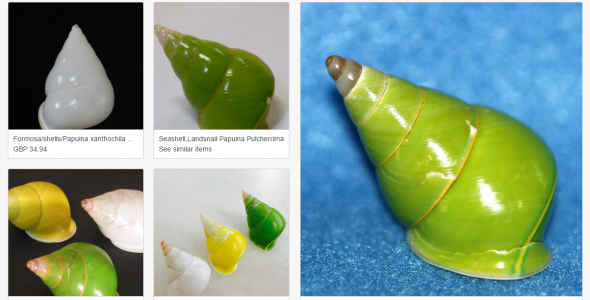
International Animal Rescue Foundation’s External Affairs Department and the Environmental Cyber Crimes Unit located many a sites trading the Manus Green Tree Snail’s shell which is illegal under some trade law, unfortunately the Ebay site listed above, located within Japan is one of many more that are trading (despite the species nearing extinction).
I.A.R.F’s Environmental Cyber Crimes Unit have since filed a complaint with Ebay, providing all the relevant data to now remove these species from their sites, however its likely to prove negative as the trader could very well state they harvested or purchased the shells before international laws were drafted. Furthermore a trace of the owner that owns this site above which is in violation of the United States and Cites laws (is located within the United States). So in regards to enforcement, breaking this link is going to be somewhat of a tough cookie. Further trade was witnessed here via what we can only believe is alleged “antiques”.
Further trade all of which is illegal has been recorded hereto - this site linked back to a Mr Rob West of 121 Henderson Road, Sheldon, Brisbane, Queensland 4157 Australia, Telephone: 610732061636. Mr West from Brisbane categorically states that he doesn’t own a shop, and is a one man band, yet clearly this link states otherwise. Further evidence revealed antique trade conducted on the Ebay site, see in the image below (illegal under United States law).
Click the image link below to view more.

“Illegal to trade under the Endangered Species Act of the United States of America”
The environmental wildlife crimes investigation team linked to TRAFFIC and Cites stated:
It is possible the avoidance of conventional nomenclature is an attempt to avoid detection by authorities. In some cases, sellers on internet market places were based in CITES signatory countries (including: Australia, Italy, New Zealand, Singapore and USA) while others were not (e.g. Taiwan). Currently, volumes of shells on sale in such online market places appear low, suggesting that the existing controls on international trade maybe adequate. However, given that the online prices of shells were often orders of magnitude greater than market prices on Manus Island, vigilance will be required to insure that illegal international demand does not fuel a resurgence in snail collection.
Despite the massive trade on Manus Green Tree Snails online and within open Asian markets, its literally impossible to determine if this trade will eventually lead to the species being pushed into extinction. However it MUST be noted that there are currently only 12-13 identified habitats that the snail currently inhabits. And based on traces online conducted by the I.A.R.F’s External Affairs Department - trade is most certainly “out of control”, and not as Cites has reported (2012).
The shell of this species is a vivid green color, which is unusual in snails. The green color is however not within the solid, calcium carbonate part of the shell but instead it is a very thin protein layer known as the periostracum. Under the periostracum the shell is yellow.
MAJOR THREATS
The Manus Green Tree Snail is mostly threatened by habitat destruction through forest clearance: logging, plantation development (especially rubber) and to a lesser extent road developments. Increasing human population growth and an increasing cultural demand for deriving cash incomes from the land will likely see the rate of forest degradation increase in the future. Harvest occurs when trees are felled as part of traditional shifting cultivation and the snails, typically found in the canopy, suddenly become exposed. Such harvesting is not uncommon but it is likely to be of lower significance than the longer term habitat degradation caused by such agricultural practices.
While harvest for illicit international trade is occurring, the volumes are not “allegedly” thought to be large compared to historic rates, although they may approach levels seen in the legal domestic trade. However, given that the prices of shells internationally are often orders of magnitude greater than market prices on Manus Island, vigilance will be required to insure that illegal international demand does not fuel a resurgence in snail collection.
Notable deposits of gold have been found in central Manus and a mine operation will likely result in the next decade although no details of the plan have been released (as of 2014). The forests of Manus Island were badly affected by the 1997-1998 El Niño which resulted in a prolonged drought. Should climatic change result in increased rates of similar conditions this may constitute a future threat to the snail species, however, current predictions suggest that future incidence of drought in Papua New Guinea will decrease (Australian Bureau of Metrology and CSIRO 2011).
Despite the reassurances from Cites, WCS and the local wildlife organisations - evidence clearly points to large scale online trade legal and illegal. Furthermore there is no telling if shells online are antique or smuggled from the Manus Islands which is very concerning.
Manus Green Tree Snail is the first such snail to be listed on the threatened list of endangered species (USA). Research also explains to us that its likely the species will be plundered into extinction - very soon. Enjoy the video.
Thank you for reading, and please be most kind to share to create awareness and education.
Dr Jose C. Depre PhD. MEnvSc. BSc(Hons) Botany, PhD(NeuroSci) D.V.M.
Environmental & Human Science
Donate by clicking the link below:
https://www.facebook.com/Anti-Pet-and-Bush-Meat-Coalition-474749102678817/app/117708921611213/
Sign up here to our A.P.B.M.C news feed below here:
https://www.facebook.com/Anti-Pet-and-Bush-Meat-Coalition-474749102678817/app/100265896690345/
Follow me on Twitter here:
https://twitter.com/josedepre11
Sources:
IUCN, WWF, CITES, WCS, Ebay, Wikipedia, Australian Bureau of Metrology and CSIRO
Endangered Species Friday [Case Study]: Dusicyon australis
Endangered Species Friday [Case Study]: Dusicyon australis
How the Fur Trade Pushed the Falkland Islands Wolf into Extinction.
This Friday’s Endangered Species watch Post (ESP) focuses on a species that was literally hunted into extinction. Daily I read comments about our wildlife or speak to animal lovers, activists or conservationists of which many show great concern in relation to legal hunting E.g (Cites permitted trophy hunting), or poaching E.g (non-permitted illegal hunting).
D. australis was identified back in 1792 as the (Falklands Wolf) by Dr Robert Kerr (1755 – 11 October 1813) was a scientific writer and translator from Scotland. Dr Kerr was born in Roxburghshire as the son of a jeweler. He studied medicine at the University of Edinburgh and practiced at the Edinburgh Foundling Hospital as a surgeon. He translated several scientific works into English, such as Antoine Lavoisier’s work of 1789, Traité Élémentaire de Chimie, published under the title Elements of Chemistry in a New Systematic Order containing All the Modern Discoveries, in 1790.
In 1792, Dr Kerr published The Animal Kingdom, the first two volumes of a four-tome translation of Professor Linnaeus’ Systema Naturae, which is often cited as the taxonomic authority for a great many species. (He never did the remaining two volumes.) What would Dr Kerr say now if he knew this magnificent creature he discovered has since been pushed into extinction via ‘legal hunting practices and deliberate persecution’?. Like few conservationists and philanthropist’s that I have spoken to whom have identified species of birds, frogs and new world primates their most common reaction is utter shock and frustration, although most were not surprised.
While Dr Kerr was the primary individual that named and listed the species, Capt. John Strong, a British Marine explorer was the very first person to discover the Falkland Island Wolf upon landing on the Falkland Islands back in the 1690’s. Based on historical and fossil records we know the species was living quite a peaceful and undisturbed life. Historical records also prove that Charles Darwin who was a naturalist and geologist whom visited the islands back in 1833 stated the Falkland’s Wolf was commonly seen. Its from this point back in the early 1800’s after Charles Darwin’s visit that the Falkland Wolf populations began to decline. Within approximately thirty years after Charles Darwin’s visit - the species then went extinct.
From 1833 to 1876 when active exploration’s and colonization’s began increasing the evidence pinpoints that humans were the primary cause for the species complete extinction. Had the Falkland’s not been colonized or disturbed by explorers and hunters its very likely the Falkland Islands Wolf would still be with us today. That is based on my own expert opinion and scientific studies that have proved islands with no human interference over eighty million years old up to the 1900’s the majority of non-colonized islands regardless of their size - all their natural wildlife discovered is still mostly intact. Take the island of Madagascar as an example!
The prehistoric breakup of the supercontinent Gondwana separated the Madagascar-Antarctica-India landmass from the Africa-South America landmass around 135 million years ago. Madagascar later split from India about 88 million years ago, allowing plants and animals on the island to evolve in relative isolation. As a result of the island’s long isolation from neighboring continents, Madagascar is home to an abundance of plants and animals found nowhere else on Earth. Approximately 90 percent of all plant and animal species found in Madagascar are endemic. So we know that if left untouched both the Falkland island and Madagascar’s habitat and wildlife both flora and fauna lived undistributed.
While Madagascar’s history is a little different from the Falkland Islands the evidence is clear, that as soon as explorers, human colonies, immigrants and travelling settlers visited - the habitat became threatened just as the Falkland’s Wolf became extinct in under thirty years after Charles Darwin’s visit, 1833. Only 10 percent of Madagascar’s forests now remain. Also, recent estimates suggest that 1-2 percent of Madagascar’s remaining forests are destroyed each year, and that a staggering 80-90 percent of Madagascar’s land area burns each year. Ninety percent of Madagascar’s Lemurs are moving towards complete extinction - and why? from 700 CE – 1500 when immigrants, traders and explorers arrived - wildlife and habitat began to decline gargantuanly. However based on historical fur trade records a pattern has emerged - its concerning - its continuing - and if not banned its likely other animals will suffer due to the fur trade.
“Our ancestors are not to blame”
But lets not jump the gun here blaming our own ancestors for the primary decline of wildlife and destruction of habitat. As Charles Darwin explained in the 1830’s on visiting the Malvina the Falkland Wolf was still quite commonly seen. Just as Lemurs and forest remained intact on the island of Madagascar before humans arrived, history tells us though that our ancestors mostly respected the land and wildlife however, its from years of 1800 that wildlife and habitat began declining. The Falkland’s Wolf wasn’t killed off by our ancestors as such but more - US fur traders from the 1830s, and when Scottish settlers arrived in the 1860s began raising sheep on the Island, D. australis was poisoned as a pest species too.
Is it just a mere coincidence that the Falkland Islands Wolf went extinct as soon as the fur trade began booming from the 1600’s to the 1800’s dare I ask? commercial fur trade in North America grew out of the early contact between Indians and European fisherman who were netting cod on the Grand Banks off Newfoundland and on the Bay of Gaspé near Quebec. Indians would trade the pelts of small animals, such as mink, for knives and other iron-based products, or for textiles. Exchange at first was haphazard and it was only in the late sixteenth century, when the wearing of beaver hats became fashionable, that firms were established who dealt exclusively in furs. The trade then spread to America thus seeing United States citizens hunting the Falklands Wolf into extinction. So again I question is it correct to blame our ancestors whom colonized the Falkland Islands of which Darwin stated the wolf was still commonly seen from 1830, bur more blame Canadians, Americans and Europeans for the introduction of the fur trade? That’s the problem, not colonization or immigration but sheer commercialization of an animal trade and greed.
There are some other factors of course that relate to the Falkland’s Wolf extinction. The species natural prey which was rodents were in decline too. Due to the decline of certain prey specimens this unfortunately forced the wolf into now human populated agricultural lands, hunting sheep. The Falkland’s Wolf was then seen as a pest of which settlers, mainly farmers deliberately laid poisoned traps thus decreasing populations furthermore. Its believed that the decline in rodents was primarily due to humans protecting their farms and crops. None knows for sure the entire Falkland’s Wolf diet but - ground-nesting birds such as geese and penguins, grubs and insects, as well as seashore scavenging would most likely have been common prey and foraging behavior.
Conclusion:
The Falkland’s Wolf was killed off by greed, legal hunting and the fur trade. Its quite sad to know that after Darwin’s notes were made public the species soon became extinct some thirty years later, had them notes not been publicized - the species could still be with extant. While we have certain protocols, laws and agreements in place such as the Convention on International Trade of Endangered Species (Cites), and the International Union for the Conservation of Nature - history is still repeating itself, so I do at the best of times question why we have such organisations in place to protect wildlife - when its “we humans” that should be taking the stand and protecting what is left on Planet Earth. While poaching remains a significantly large threat to many large fauna such as Lions, Elephants, Rhino and aquatic wildlife. The agricultural trade, indiscriminate hunting and habitat loss remains the number one threat to all species of flora and fauna.
So, how do we stop further extinctions and declines of wildlife? Well if you’ve read this entire article all the way through (the answer is in front of you).. You’ve just got to open your eyes, absorb the information and act on it.
Dr Jose C. Depre.
Environmental and Botanical Science.
info@international-animalrescue-foundation.org.uk
Endangered Species Friday: Diomedea amsterdamensis - An Ocean of Grief.
Endangered Species Friday: Diomedea amsterdamensis
This Friday’s (ESP) Endangered Species watch Post I dedicate to one of the most stunning and adorable of all plane like birds. Listed as [critically endangered] and identified back in 1983 by South African Dr Jean Paul Roux whom is a Marine Biologist studying Zoology, Systems Biology and Marine Biology at the University of Cape Town, South Africa Jean Paul Roux works full-time at the Department of Biological Sciences, Cape Town. (Image D. amsterdamensis fledglings)
(Image: Birdingblogs.com)
Commonly identified as the Amsterdam Albatross or Amsterdam Island Albatross the species was listed as [critically endangered] back in 2012. This gorgeous bird is endemic to the French Southern Territories of which its populations are continuing to decline at a rapid pace. Populations were estimated at a mere 170 individuals which in turn ranks as the worlds most endangered species of bird. Out of the 170 individuals there are a total of 80 mature individuals consisting of 26 pairs that breed annually.
Between 2001-2007 there were a total of 24-31 breeding pairs annually, which leaves a slightly lower population count today of around 100 mature individuals. Back in 1998 scientists stated that there were no fewer than 50 mature individuals if that. The Amsterdam Albatross doesn’t naturally have a small population however qualified for the category of [critically endangered] due to this reason when identified in 1983. Furthermore pollution, habitat destruction and disease remain pivotal factors that’s decreasing populations furthermore. The video below from MidWay island explains a little more about pollution and birds of this caliber.
Its quite possible that there could be more unidentified groups within the local territory or elsewhere, unfortunately as yet there is no evidence to suggest the Amsterdam Albatross is located anywhere else, however there have been sightings, which do not necessarily count as the species being endemic to countries the bird may have been noted within.
The species breeds on the Plateau des Tourbières on Amsterdam Island (French Southern Territories) in the southern Indian Ocean. An increase of populations was documented via census back in 1984, a year after identification. Marine Biologists have stated that population sizes may have been more larger when its range was more extensive over the slopes of the island.
Meanwhile in South Africa satellite tracking data has indicated the Amsterdam Albatross ranges off the coast of Eastern South Africa to the South of Western Australia in non-breeding pairs. There have been some [possible] sightings over Australia through to New Zealand too. Meanwhile South Africa “may” have its first breeding pair this must not be taken as factual though. Back in 2013 a nature photographer photographed an Amsterdam Albatross off the Western Cape of South Africa which is the very first documented and confirmed sighting [2013].
AN OCEAN OF GRIEF
Breeding is biennial (when successful) and is restricted to the central plateau of the island at 500-600 m, where only one breeding group is known. Pair-bonds are lifelong, and breeding begins in February. Most eggs are laid from late February to March, and chicks fledge in January to February the following year.
Immature birds begin to return to breeding colonies between four and seven years after fledging but do not begin to breed until they are nine years of age. The Amsterdam Albatross exact diet is unknown, but probably consists of fish, squid and crustaceans. During the breeding season, birds forage both around Amsterdam Island and up to 2,200 km away in subtropical waters which is something of interest. During the great Sardine Run many aquatic species consisting of birds, seals, sharks and whales hit the South African oceans hard for sardines. So I am calling on my fellow South African friends to please be on the lookout for this rather elusive bird.
Read more here on the Avian Biology.
Image: Amsterdam Albatross mating ritual, credited to Andrew Rouse.
Diomedea amsterdamensis, is quite a large albatross. When described in 1983, the species was thought by some researchers to be a sub-species of the wandering albatross, D. exulans. Bird Life International and the IOC recognize it as a species, James Clements does not, and the SACC has a proposal on the table to split the species. Please refer to the link above on Avian Biology which will explain more on the bird and its current classification.
More recently, mitchondrial DNA comparisons between the Amsterdam albatross, the wandering albatross Diomedea exulans, the Antipodean albatross D. antipodensis and the Tristan albatross D. dabbenena, provide clear genetic evidence that the Amsterdam albatross is a separate species.
Threats
Degradation of breeding sites by introduced cattle has decreased the species’s range and population across the island. Human disturbance is presumably also to blame. Introduced predators are a major threat, particularly feral cats. Interactions with longline fisheries around the island in the 1970s and early 1980s could also have contributed to a decline in the population.
Today the population is threatened primarily by the potential spread of diseases (avian cholera and Erysipelothrix rhusiopathiae) that affect the Indian Yellow-nosed Albatross Thalassarche carteri population 3 km from the colony. Infection risks are very high and increased chick mortality over recent years suggests the population is already affected.
The foraging range of the species overlaps with longline fishing operations targeting tropical tuna species, so bycatch may also still be a threat, and a recent analysis has suggested that bycatch levels exceeding six individuals per year would be enough to cause a potentially irreversible population decline. Having a distribution on relatively low-lying islands, this species is potentially susceptible to climate change through sea-level rise and shifts in suitable climatic conditions. Plastic pollution has also been noted as problematic.
International Animal Rescue Foundation Africa and International Animal Rescue Foundation France are currently working on projects to reduce more plastic within bird habitat that has never been visited by the organisation before. The current plight of bird habitat and plastic pollution within the Pacific ocean needs to be worked on by everyone, furthermore addressed immediately.
To date all twenty two species within the four genera of Albatross are heavily threatened with extinction. There remains no species at present that is listed as [least concern]. The future is indeed very bleak for all 22 species and something we now need to work on and towards to preserve Albatross’s before extinction occurs within a decade for the vast majority of all twenty two species and sub-species.
Thank you for reading.
Please share to make aware the plight of this stunning bird and the remaining twenty two species too.
Dr Jose C. Depre.
Botanical and Environmental Scientist.
A planet without birds is a world not worth living within anymore. Daily I am traumatized and deeply disturbed at viewing the destruction we have caused to these stunning animals and, their natural habitat. I am pained, deeply frustrated and infuriated at international retail companies whom preach good yet practice negligence killing off via plastic pollution our species of birds. Jose Depre
Endangered Species Friday: Aceros nipalensis
Endangered Species Friday: Aceros nipalensis
This Fridays (ESP) - Endangered Species watch Post I have chosen to document on this stunning species known commonly as the Rufous-cheeked Hornbill, because of large population declines throughout most of the birds historical range. More awareness needs to be created with regards to this particular bird specie due to their natural habitat declining and localized extinctions that have already occurred in the past decade. Furthermore extinctions are now likely to occur within Viet Nam and [west] Thiland where hunting is the primary threat to the species.. (Image credit Ian Fulton).
Identified back in 1829 by Mr Brian Houghton Hodgson (1 February 1800 or more likely 1801– 23 May 1894) was a pioneer naturalist and ethnologist working in India and Nepal where he was a British Resident. He described numerous species of birds and mammals from the Himalayas, and several birds were named after him by others such as Edward Blyth.
Listed as vulnerable the A. nipalensis is endemic to Bhutan; China; India; Lao People’s Democratic Republic; Myanmar; Thailand and Viet Nam. Unfortunately A. nipalensis has already been declared extinct locally in Nepal. Like many large birds within this region of Asia the Rufous-cheeked (or necked) Hornbill’s populations are declining quite extensively throughout their range of which deforestation and habitat degradation and, hunting is primarily to blame.
The species has been listed on Cites Appendix (I-II) of which an estimated population census count has determined there are no less than 2,500 birds but no greater than 9,999. A survey count back in 2001 by Bird-Life International concluded that from the [estimate] above the [true] population count is actually by far more lower than previously suggested, however few conservationists are now debating this due to the birds ‘alleged’ extensive range within South East Asia.
From the Bird Life International (2001) census the organisation stated there was no fewer than 1,667 mature individuals but no greater than 6,666, which is rounded to 1,500 to 7,000 mature individuals exactly. Since the last 2001 census its quite possible populations have increased and decreased to date.
A. nipalensis is known to inhabit the following ranges; Bhutan, north-east India, Myanmar, southern Yunnan and south-east Tibet, China, [west] Thailand, Laos and Viet Nam. The species has declined [drastically] and is no longer common throughout most of its known historical range. While we know the species is now regionally extinct within Nepal the next likely localized extinction may very well be within Viet Nam of which its populations have fallen to alarming rates.
Within [most] of Thailand where the species was quite common reports have sadly indicated the bird is no longer commonly seen, and like Viet Nam, Thailand could become the third county to see localized extinctions occurring too, the only known habitat within Thailand that A nipalensis occurs now is within west Thailand. To date reports have confirmed that within Bhutan A. nipalensis remains pretty much common of which Bhutan is known to the birds [largest] stronghold.
Healthy large populations have also been documented back in 2007 within Namdapha National Park, India, Nakai-Nam Theun National Biodiversity Conservation Area, central Laos and perhaps also Huai Kha Khaeng, [west Thailand], and Xishuangbanna Nature Reserve, China. Some conservationists have been led to believe that while populations are considered quite large within these strongholds that the species may very well be “more widespread than previously thought”. Meanwhile the species is known to inhabit north Myanmar, and there are recent records from West Bengal and Eaglenest Wildlife Sanctuary, Arunachal Pradesh, India.
Rufous-cheeked Hornbill commonly resides within broad-leaved forest, some reports have also indicated the species to be present within dry woodland too. Mating and nesting normally occurs from the months of March to June within large wide girth trees, the very trees that the species depends on though are being felled throughout most of the Hornbills historical range.
Image: Rufous-necked-Hornbill (Photographer unknown)
Major Threats
Its dependence on large trees for feeding and nesting makes it especially susceptible to deforestation and habitat degradation through logging, shifting cultivation and clearance for agriculture. Furthermore, viable populations require vast tracts of forest to survive, exacerbating its susceptibility to habitat fragmentation. These problems are compounded by widespread hunting and trapping for food, and trade in pets and casques. Hunting is the primary threat to the species in Arunachal, India. A report from the Wildlife Extra organisation details poaching incidents with regards to Hornbills.
Wildlife Extra stated:
The unique and intriguing breeding habits that caught Pilai Poonswad attention are central to the birds’ plight. Each hornbill pair seeks out a suitable hollow – 15 to 40 metres above the ground in the trunk or branch of a Neobalanocarpus, Dipterocarpus or Syzygium tree – in which to raise a single chick. When a suitable cavity is found, the female walls herself in, using mud supplied by her mate and regurgitated food, to hatch and rear her chick. The male feeds them for the next three months and, if he fails, both mother and chick may perish. The birds consume up to 80 different kinds of fruit, scattering the seeds over many hectares of forest. With other seed-distributing animals such as monkeys now scarce, the hornbill has become pivotal in maintaining the integrity of the forest. But the birds rarely spread the seeds of the trees in which they nest: if these disappear, the hornbills too will vanish – and the trees and plants they help propagate will soon follow.
Click the link above via the [report] to read more on this very fascinating conservationist.
My name is Dr Jose Carlos Depre, MD, B.Env.Sc, BSBio, D.V.M. I myself have been working within bird, tree kangaroo and pachydermata conservation, rescue and reporting for over fifteen years.
Within these unique, wonderful and exhilarating years I have witnessed one of my favorite species of animals [birds] declining to worrying levels that is now so concerning it has led to sleepless nights for many years. Should we continue to see such catastrophic population decreases of birds we’ll eventually witness alarming declines of plants and trees. The same applies with insects and herbivorous mammals too.
Like insects birds are incredibly important for both human and animal survival. The vast majority of all bird species rely on plants for their staple diet. On consuming fruits, leaves, flowers Etc, the very seeds within the birds diet of life needed to continue seed dispersal will be lost should all bird populations go extinct. Should this occur we selfish humans will then become the Planets seed disperses. Think about that next time you fell a tree or rip a plant up.
Dr Jose. C. Depre
Environmental and Botanical Scientist.
Thank you for reading and please share fare and wide to create as much awareness for all Hornbills as possible.



